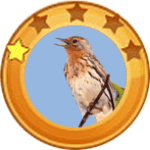- Home
- Shop
- Forest Series
- Grassland Series
- Desert Series
- Contact
- Home
- Shop
- Forest Series
- Grassland Series
- Desert Series
- Contact






LICENSED KIDS CAR GIFT
This 12V official-licensed upgraded kids ride on roadster with swing-up scissor doors is a realistic model of a Lamborghini Sain car, which will be an attractive Christmas/birthday gift for your 3-6 year-old toddlers to make them the eye-catching among their friends.
DURABLE STRUCTURE WITH SHOCK-ABSORBING WHEELS
Made from reinforced eco-friendly plastic (passed ASTM F963 and CPSIA), the motorized vehicle working on 4 wear-proof plastic wheels with comfortable spring suspension system is sturdy and stable for boys and girls within 55 lbs to explore the outdoors.
SAFETY DESIGN WITH 3-POINT BELT
Featuring a single seat with a 3-point safety belt, soft start/stop, limited speed (up to 3.1 mph), and remote priority function, the 12V toddler supercar is safe to play with parental supervision.


CHARACTERISTICS
The Chipmunk is a member of the family Mammalia, Rodentia and Sciuridae. It is also known as the Striped Squirrel, the Timber Tiger and the Mini-bear. The body length among most Chipmunks ranges from 5.5 to 6.3 inches and the tail length is 5 Inches. Chipmunks typically weigh about 0.02 pounds and live about 5 to 10 years. They have small but prominent ears which face forwards, and small eyes on the sides of their heads. Most wild Chipmunks are lively.


Lorem ipsum dolor sit amet, consectetur adipiscing elit. Ut elit tellus, luctus nec ullamcorper mattis, pulvinar dapibus leo.


CHARACTERISTICS
The Red-Throated Pipit is a small passerine bird, with an adult easily identified in the breeding season by its brick-red face and throat, contrasting with a streaked white belly. In other plumages, this is an undistinguished-looking species, heavily streaked brown above, with whitish mantle stripes, and with black markings on a white background below. It weighs 0.04-0.06 lbs and has a body length of 5.3-6.6 inches.

RANGE AND HABITAT
The Red-Throated Pipit breeds in the Arctic coastal zone of northern Eurasia, west to northern Scandinavia, and east to Kamchatka, inhabiting scrub, meadows, open plains, and low mountain foothills. It is a long-distance migrant, moving in winter to Africa, South and East Asia, and the West Coast of the United States.

DIET
The Red-Throated Pipit mainly feeds on insects, mostly insects and larvae of Coleoptera, Hymenoptera and Diptera, and eats a small amount of plant food when food is scarce.

BEHAVIOR
The Red-Throated Pipit mostly moves in pairs, foraging on the ground and flying to branches or rocks when startled. The nest is built on the ground, often beside a tussock of grass, on rough grassland, or on a hummock in a marsh. It is made of dry grasses and sedges with a soft lining of reindeer hair or down. The flight of the Red-Throated Pipit is strong and direct, and it gives a characteristic psii call as it flies.
From June to July, the Red-Throated Pipit breeds. Four to six eggs are laid and incubated by the female for nearly two weeks. The young are fledged and ready to leave the nest about 12 days later.

The Chipmunk is a member of the family Mammalia, Rodentia and Sciuridae. It is also known as the Striped Squirrel, the Timber Tiger and the Mini-bear. The body length among most Chipmunks ranges from 5.5 to 6.3 inches and the tail length is 5 inches. Chipmunks typically weigh about 0.02 pounds and live about 5 to 10 years. They have small but prominent ears which face forwards, small eyes on the sides of their heads. Most wild Chipmunks are lively.
The Red Squirrel, a member of the Sciuridae, is an arboreal, omnivorous rodent often referred to as a Forest Seeder and folklore as the Devil King Squirrel.
The Arizona Gray Squirrel, also known as the American Gray Squirrel, is a member of the family Rodentia and Sciuridae. It is small in size, with gray fur and a belly between white and cream. It has long ears, no tufts of fur and a fluffy tail edged in white. The body is about 16-20 inches long and weighs up to 1.4 pounds.
The Rock Squirrel, also known as Sao Maozi or Stone Mouse, belongs to the rodent and is a species in the family Sciuridae. The most common natural predators of the Rock Squirrel include bobcats, owls, eagles and snakes. Though the Rock Squirrel is cute, alert, and courageous, it is still considered a pest due to its habit of destroying crops.
The Abert’s Squirrel is a member of the genus Sciurus with a body length of 18-22.8 inches, a tail length of 7.5-9.8 inches and a weight of 2.2 pounds, and can live up to 10 years in the wild. Its most distinctive feature is tassels of fur about 0.8-1.2 inches long at the tip of its ears, which looks very interesting. In addition, it is alert and agile.

A Hong Kong First – Tree Pipit
In my 26 years of birding, I’ve always been inspired by more experienced birders and their stories in finding new birds for Hong Kong, it seems so exciting to find something unreported before. While I predicted a few species that were ultimately found by others, somehow, the prospect in finding a Hong Kong first eluded me for many years. On 3rd of March, I met up with Kenneth Lam for a half day of birding in Mai Po, it was the usual routine of walking past AFCD warden post and walking a long the access footpath. There, we flushed a small flock of Olive-backed Pipits, but just as they took to the air, one single bird caught my eye. It was similar sized to the other pipits, but seemed to be paler when it took off.
We were able to relocate the flock of pipits on a nearby tree, the bird that interested me looked fairly similar to Olive-backed Pipits at first glance, but when we got closer something felt off about this particular bird. First, the streaks on its flank were very fine, unlike Olive-backed Pipits which have very bold streaks. The upperparts was a sandy brown and not greyish olive as you would expect on an Olive-backed Pipit. Its mantle was heavily streaked. Luckily for us the bird flew back on the ground and continued to showed well. By then we figured it didn’t fit any pipit species we have in Hong Kong. In the end, we came to the most logical conclusion that this had to be a Tree Pipit! We soon got the news out and many birders were able to connect with this rarity.
Tree Pipits have been reported in South Korea, Japan and Taiwan, with most records in China concentrated near Xinjiang. This had been on our ‘possible list’ for quite some time, and what a thrill it was to finally find it in Hong Kong! Here a better comparison shots of the two species, Olive-backed Pipit above, with dark spots behind ear covert, heavily streaked breast and flank with greyish olive upperparts. Tree Pipit below, showing fine streaking on flank, warmer tones upperparts, heavily streaked mantle, and slightly more buffish supercelium. Behaviour wise it was almost identical to the Olive-backed Pipits, and sounded almost identical to the other Olive-backed Pipits. Though scanning through the common species can be tedious, it does payoff eventually!
Other than the pipit, Mai Po is currently hosting a good selection of ducks, while the long staying Common Shelduck is still present (Was too far away so I didn’t bother to photograph it again), an American Wigeon have been reported and we were able to connect with it as well. The Baikal Teal was still present, although not giving close views as it had for other birders. Good numbers of Falcated Ducks were still present on the scrape.
Black-headed Gull is by far the commonest gulls present, a few already moulted into their breeding plumage, such as this good looking individual.
Good numbers of large gulls were still present, although nothing particularly interesting were found, the three common large gulls species in Hong Kong are the Heuglin’s Gull (Lesser Black-backed Gull), Vega Gull and Mongolian Gull, although the Mongolian Gull is now considered a subspecies of the Vega Gull.
A few Black-tailed Gulls were also present, though all of them were juveniles. It is still a bit early for migrating terns, but we did find a single Gull-billed Tern amongst the Black-headed Gulls.
Back over at Tai Po Kau, I finally connected with one of the long staying White-spectacled Warbler, this one showed fairly well, although the dark conditions made it challenging for photographs. Although Asian Stubtail numbers seems to be down this year, I still managed to find this one to photograph skulking on the dark forest floor.
Bay Woodpeckers continue to be very active lately, including a pair at Tai Po Kau which showed very well for me. The male was particularly interesting, as it was ringed. I asked the ringing group about this and they stated a total of four birds were ringed in Tai Po Kau in 2016 and 2019, so this one is likely to be one of these individual. The resident Crested Serpent Eagle now back near its usual spot as snake season begins. Other common birds in Tai Po Kau showed well in various bird waves, Grey-chinned Minivets are always a crowd favourite whenever they come to feed low down.
Wu Kau Tang continues to be very good, I found a tree where the Common Rosefinches came lower down to feed, although views were not as close as those at Shek Kong, the morning sunlight brought out the best of the male’s colours.
At least three different Hainan Blue Flycatchers wintered in Wu Kau Tang this year, their call always gave me hope that perhaps a Hill Blue or Chinese Blue Flycatcher was around, but they are still good to see in the winter. Chinese Hwamei now becoming far more vocal than before as spring approaches.
Hartert’s Leaf Warblers are now very vocal, you can often hear their song as you walk along the trial. We have two different subspecies in Hong Kong, nominate race often have very yellow underparts, that at first glance can sometimes be mistaken as Sulphur-breasted Warblers, race fokiensis have paler underparts. Both subspecies feed by climbing around tree trunks and branches like nuthatch.
The best warbler at Wu Kau Tang is by far the Chestnut-crowned Warbler, two of these pretty warblers have been seen often along the same valley as the Barred Cuckoo-doves. This is certainly a species we can hardly get bored of!
Over at Luk Keng, a male Red-breasted Flycatcher been showing well lately, I personally have never seen a male in Hong Kong. It was very vocal and rather confiding, making it an excellent subject for photographs!
Finally, the Cinnamon Bittern at Tai Mei Tuk continues to show well, although the group of photographers surrounding the pond is no more, so I was able to enjoy this bird at close range in peace one afternoon.



Follow Us: